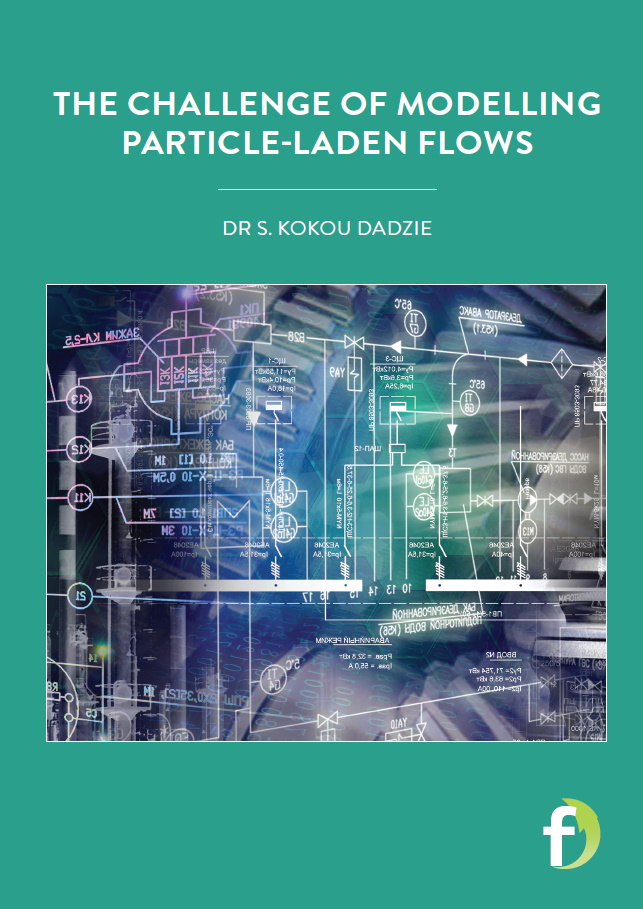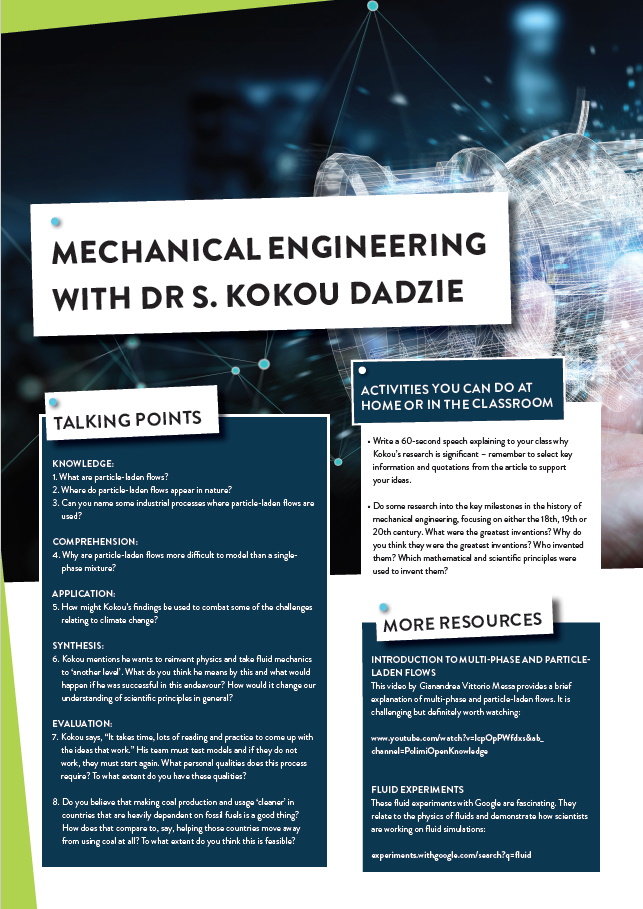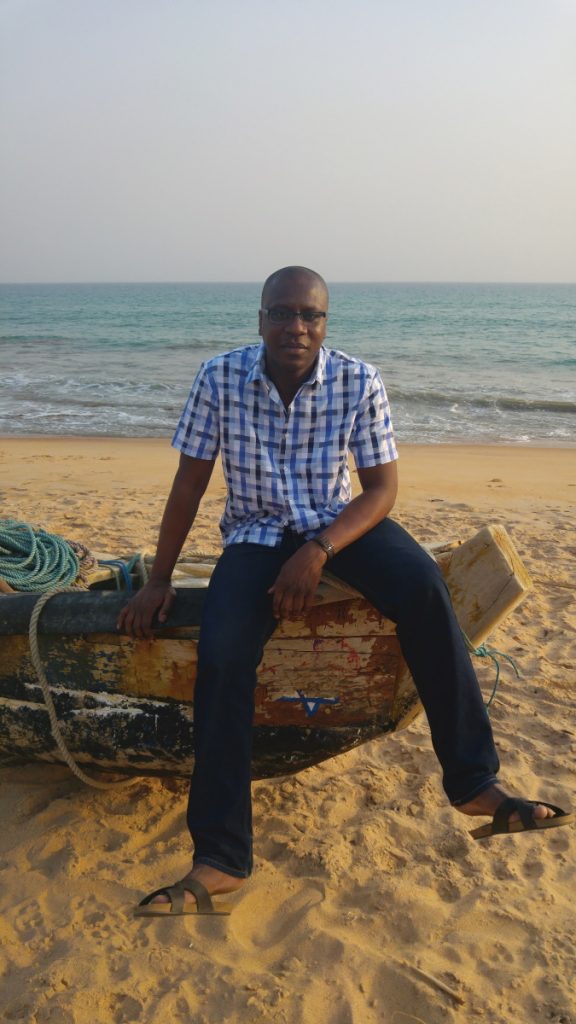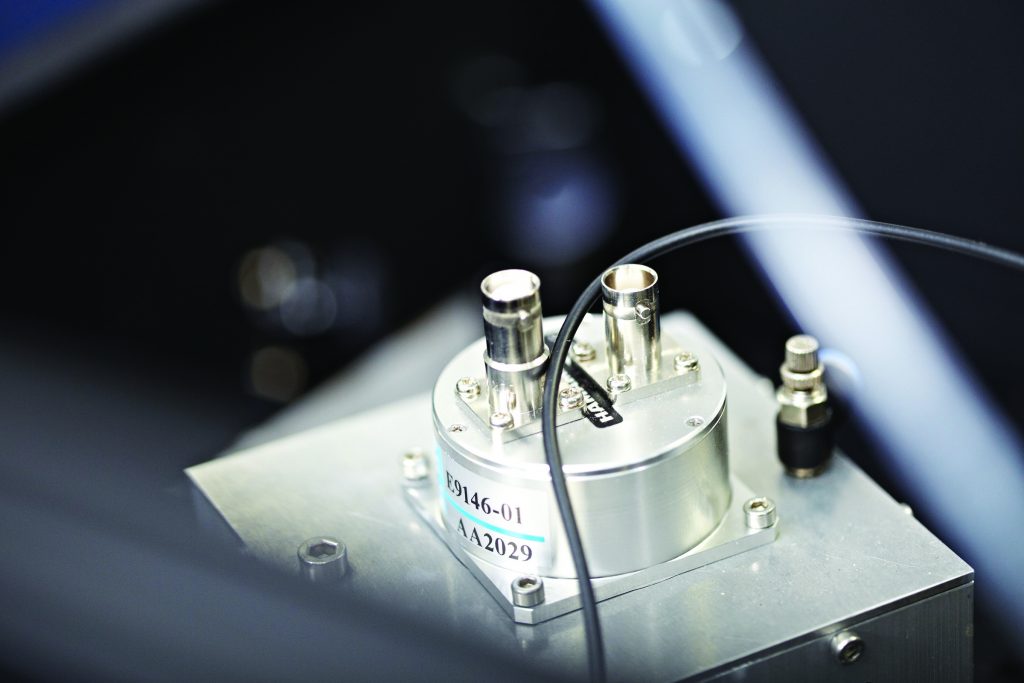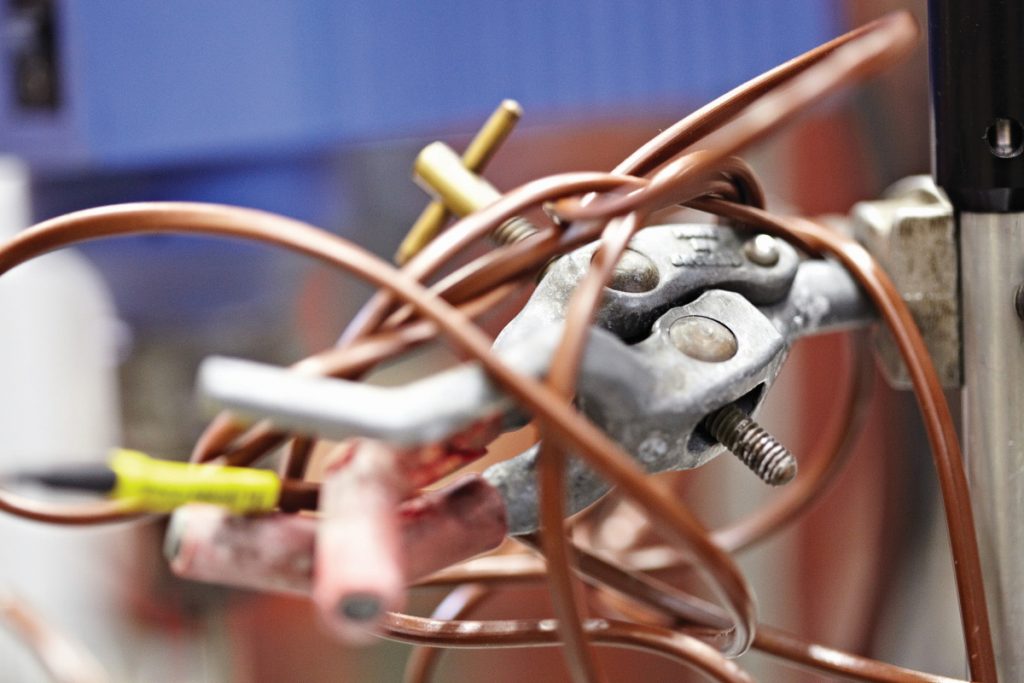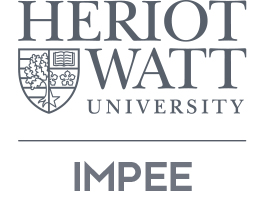The challenge of modelling particle-laden flows
Dr S. Kokou Dadzie is a mechanical engineer based at Heriot-Watt University in Scotland. His research is focused on modelling particle-laden flows, which could help improve air quality and help society meet clean energy generation goals
TALK LIKE A MECHANICAL ENGINEER
NON-CONTINUUM FLOWS – where there are not enough discrete fluid material elements, i.e. particles or molecules, for a fluid element to be assumed continuous and indefinitely divisible
PARTICLE-LADEN FLOWS – a class of two-phase fluid flow, in which one of the phases is continuously connected (referred to as the continuous or carrier phase) and the other phase is made up of small, immiscible and typically dilute particles
RAREFIED GAS DYNAMICS – something concerned with flows at such low density that the molecular mean free path is not negligible. Under these conditions, the gas no longer behaves as a continuum
KINETIC THEORY – the body of theory which explains the physical properties of matter in terms of the motions of its constituent particles
HYDRODYNAMICS – a branch of physics that deals with the motion of fluids and the forces acting on solid bodies immersed in fluids and in motion relative to them
PHYSICS OF FLUIDS – the study of the mechanical and flow properties of fluids, especially as they apply to practical engineering
Put simply, particle-laden flows are multiphase flows that are composed of a mixture of solid particles and a liquid or gas phase. This flowing mixture involves a number of interactions between the solid particles and the carrier fluid, which are of interest to researchers for a variety of reasons.
Particle-laden flows are abundant in nature, such as in blood flow, dust storms, geophysical flows and rain formation in clouds. However, they are also used in a range of engineering and industrial processes, such as fluidised-bed reactors, which are used to operate power plants in generating electricity. The importance of fluidised-bed reactors can hardly be overstated because, as we begin to generate clean electricity to combat the impacts of global warming and climate change, fluidised-bed reactors are one of the technologies that will enable industry to generate clean electricity from coal, i.e. generating electricity whilst emitting much less CO2, particularly in heavily dependent countries such as China.
In more general terms, particle-laden flow technologies are essential if we are to work towards controlling the air pollution in cities around the world; they are required in the design of air purification systems. Given the importance of particle-laden flow technologies, Dr S. Kokou Dadzie is working on a means of modelling particle-laden flows, in the hope that his findings will enable the development of new technologies that serve the requirements of the future.
WHY IS THE MODELLING OF PARTICLE-LADEN FLOWS SO CHALLENGING?
Based within the Institute of Mechanical, Process and Energy Engineering at Heriot- Watt University in Scotland, Kokou leads a team studying particle-laden flows, with the aim of understanding the interactions between the solid particles and the carrier fluid. However, to achieve this modelling, a number of assumptions have to be made. “If the solid particles have density similar to that of the liquid or the gas, then the mixture may be considered a single phase. In a single-phase fluid, Newton’s laws of motion translate into the fluid flow equations that is the Navier-Stokes equation. But in a mixture such as particle-laden flows, the fluid dynamics is more complex,” explains Kokou. “Therefore, new tools such as those used in kinetic theory of gases, which describes the motion of a gas by almost following the motion of individual particle, has to be used. Generally speaking, in particle laden-flows, a number of flow phenomena occur that need to be replicated in the modelling process.”
WHAT HAS MOTIVATED KOKOU TO TACKLE THIS CHALLENGE?
This current project is a progression from Kokou’s previous research – he worked in rarefied gas dynamics during his PhD and post-doctoral research fellowship. Rarefied gas dynamics relate to the motion of a gas where the separation distance between molecules is large. To study this, the molecular structure of a given gas needs to be considered – which is something that can be ignored in other fields of study, such as modelling water flowing in a river, for instance. “Rarefied gas flows involve non-equilibrium effects that we do not see when dealing with air flowing over a car or air flowing in a room. I developed models in rarefied gas that are capable of handling some of these complex non-equilibrium phenomena,” says Kokou. “As particle-laden flows share some similarity with rarefied gas, it was therefore the ideal candidate to translate my work in rarefied gas dynamics into particle-laden flows.”
HOW WILL KOKOU DEVELOP A MORE SOPHISTICATED MODEL OF PARTICLE-LADEN FLOWS?
Traditional models follow some traditional fluid modelling process, such as replicating Newton’s laws of motion. The problem is that there are observations that those models do not describe. For example, in particle-laden flows, particles can arrange themselves in some form of structures. It is therefore necessary to develop mathematical models that are capable of capturing or reproducing these structures in experiments. Because the physics of fluids is not strictly restricted to the laws of motion as they relate to solid objects, Kokou is looking for new laws of motion that work better in fluids.
The experiments all start with existing models and examining where they have failed. From there, the team seek to find improvements. “In constructing our new models, we start with some basic principles, then formulate the mathematical models. Once constructed, they must be compared to existing models, then tested and, if they do not work, we start again,” explains Kokou. “The project team members all contribute to this in various ways. It takes time, lots of reading and practice to come up with the ideas that work. We then meet up to share our developments and ideas to make progress.”
WHAT ARE THE APPLICATIONS OF THIS STUDY?
The research will help us to understand – and therefore predict – natural phenomena, such as volcanic ash disruptions. Armed with this knowledge, industry will be better positioned to design systems that can combat issues relating to these particle-laden flows. As mentioned earlier, there is also the expected outcome that cities around the world will be better able to meet clean energy goals and improve air quality for residents.
WHAT ARE THE NEXT STEPS?
The team has already had some notable successes which have involved identifying the challenges in the modelling process. There are several steps involved in the project, such as the development of mathematical methods for the gas phase and then the particle phase, followed by numerical implementation and testing. The team has made good progress on the gas phase and its numerical implications. It is currently investigating different forms for the particle phase and expects some progress in the near future.
However, the particle-laden flow project is just one aspect of Kokou’s wider research interests. “My ultimate ambition is to take fluid mechanics to another level and there are a number of issues in the field that need to be resolved,” says Kokou. “At the moment, I am looking into other projects that will enable me to work on those other issues. In many ways, fluid mechanics involves reinventing physics, but I am hopeful I can succeed in doing this!”
Reference
https://doi.org/10.33424/FUTURUM162
NON-CONTINUUM FLOWS – where there are not enough discrete fluid material elements, i.e. particles or molecules, for a fluid element to be assumed continuous and indefinitely divisible
PARTICLE-LADEN FLOWS – a class of two-phase fluid flow, in which one of the phases is continuously connected (referred to as the continuous or carrier phase) and the other phase is made up of small, immiscible and typically dilute particles
RAREFIED GAS DYNAMICS – something concerned with flows at such low density that the molecular mean free path is not negligible. Under these conditions, the gas no longer behaves as a continuum
KINETIC THEORY – the body of theory which explains the physical properties of matter in terms of the motions of its constituent particles
HYDRODYNAMICS – a branch of physics that deals with the motion of fluids and the forces acting on solid bodies immersed in fluids and in motion relative to them
PHYSICS OF FLUIDS – the study of the mechanical and flow properties of fluids, especially as they apply to practical engineering
Put simply, particle-laden flows are multiphase flows that are composed of a mixture of solid particles and a liquid or gas phase. This flowing mixture involves a number of interactions between the solid particles and the carrier fluid, which are of interest to researchers for a variety of reasons.
Particle-laden flows are abundant in nature, such as in blood flow, dust storms, geophysical flows and rain formation in clouds. However, they are also used in a range of engineering and industrial processes, such as fluidised-bed reactors, which are used to operate power plants in generating electricity. The importance of fluidised-bed reactors can hardly be overstated because, as we begin to generate clean electricity to combat the impacts of global warming and climate change, fluidised-bed reactors are one of the technologies that will enable industry to generate clean electricity from coal, i.e. generating electricity whilst emitting much less CO2, particularly in heavily dependent countries such as China.
In more general terms, particle-laden flow technologies are essential if we are to work towards controlling the air pollution in cities around the world; they are required in the design of air purification systems. Given the importance of particle-laden flow technologies, Dr S. Kokou Dadzie is working on a means of modelling particle-laden flows, in the hope that his findings will enable the development of new technologies that serve the requirements of the future.
WHY IS THE MODELLING OF PARTICLE-LADEN FLOWS SO CHALLENGING?
Based within the Institute of Mechanical, Process and Energy Engineering at Heriot- Watt University in Scotland, Kokou leads a team studying particle-laden flows, with the aim of understanding the interactions between the solid particles and the carrier fluid. However, to achieve this modelling, a number of assumptions have to be made. “If the solid particles have density similar to that of the liquid or the gas, then the mixture may be considered a single phase. In a single-phase fluid, Newton’s laws of motion translate into the fluid flow equations that is the Navier-Stokes equation. But in a mixture such as particle-laden flows, the fluid dynamics is more complex,” explains Kokou. “Therefore, new tools such as those used in kinetic theory of gases, which describes the motion of a gas by almost following the motion of individual particle, has to be used. Generally speaking, in particle laden-flows, a number of flow phenomena occur that need to be replicated in the modelling process.”
WHAT HAS MOTIVATED KOKOU TO TACKLE THIS CHALLENGE?
This current project is a progression from Kokou’s previous research – he worked in rarefied gas dynamics during his PhD and post-doctoral research fellowship. Rarefied gas dynamics relate to the motion of a gas where the separation distance between molecules is large. To study this, the molecular structure of a given gas needs to be considered – which is something that can be ignored in other fields of study, such as modelling water flowing in a river, for instance. “Rarefied gas flows involve non-equilibrium effects that we do not see when dealing with air flowing over a car or air flowing in a room. I developed models in rarefied gas that are capable of handling some of these complex non-equilibrium phenomena,” says Kokou. “As particle-laden flows share some similarity with rarefied gas, it was therefore the ideal candidate to translate my work in rarefied gas dynamics into particle-laden flows.”
HOW WILL KOKOU DEVELOP A MORE SOPHISTICATED MODEL OF PARTICLE-LADEN FLOWS?
Traditional models follow some traditional fluid modelling process, such as replicating Newton’s laws of motion. The problem is that there are observations that those models do not describe. For example, in particle-laden flows, particles can arrange themselves in some form of structures. It is therefore necessary to develop mathematical models that are capable of capturing or reproducing these structures in experiments. Because the physics of fluids is not strictly restricted to the laws of motion as they relate to solid objects, Kokou is looking for new laws of motion that work better in fluids.
The experiments all start with existing models and examining where they have failed. From there, the team seek to find improvements. “In constructing our new models, we start with some basic principles, then formulate the mathematical models. Once constructed, they must be compared to existing models, then tested and, if they do not work, we start again,” explains Kokou. “The project team members all contribute to this in various ways. It takes time, lots of reading and practice to come up with the ideas that work. We then meet up to share our developments and ideas to make progress.”
WHAT ARE THE APPLICATIONS OF THIS STUDY?
The research will help us to understand – and therefore predict – natural phenomena, such as volcanic ash disruptions. Armed with this knowledge, industry will be better positioned to design systems that can combat issues relating to these particle-laden flows. As mentioned earlier, there is also the expected outcome that cities around the world will be better able to meet clean energy goals and improve air quality for residents.
WHAT ARE THE NEXT STEPS?
The team has already had some notable successes which have involved identifying the challenges in the modelling process. There are several steps involved in the project, such as the development of mathematical methods for the gas phase and then the particle phase, followed by numerical implementation and testing. The team has made good progress on the gas phase and its numerical implications. It is currently investigating different forms for the particle phase and expects some progress in the near future.
However, the particle-laden flow project is just one aspect of Kokou’s wider research interests. “My ultimate ambition is to take fluid mechanics to another level and there are a number of issues in the field that need to be resolved,” says Kokou. “At the moment, I am looking into other projects that will enable me to work on those other issues. In many ways, fluid mechanics involves reinventing physics, but I am hopeful I can succeed in doing this!”
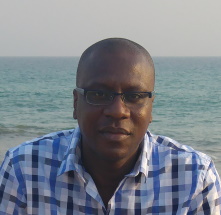 DR S. KOKOU DADZIE
DR S. KOKOU DADZIE
Associate Professor, Institute of Mechanical, Process and Energy Engineering, School of Engineering and Physical Sciences, Heriot-Watt University, Edinburgh, Scotland, UK
FIELD OF RESEARCH: Mechanical Engineering
RESEARCH PROJECT: Kokou’s research is focused on modelling particle-laden flows. The findings could help improve air quality and help society meet clean energy generation goals.
FUNDERS: EPSRC
 DR S. KOKOU DADZIE
DR S. KOKOU DADZIE
Associate Professor, Institute of Mechanical, Process and Energy Engineering, School of Engineering and Physical Sciences, Heriot-Watt University, Edinburgh, Scotland, UK
FIELD OF RESEARCH: Mechanical Engineering
RESEARCH PROJECT: Kokou’s research is focused on modelling particle-laden flows. The findings could help improve air quality and help society meet clean energy generation goals.
FUNDERS: ESPRC
ABOUT MECHANICAL ENGINEERING
As Kokou’s research makes clear, mechanical engineering involves many different scientific principles, such as physics, engineering, mathematics and material science. In addition to the maths and physics involved in modelling aspects such as particle-laden flows, there is also the wider need to translate findings into real-world applications (which Kokou’s research will hopefully eventually lead to). These aspects lean heavily on engineering and materials science.
Mechanical engineering came to prominence in the 19th century, when the Industrial Revolution was sweeping across the UK and Europe. It would be impossible to list all of the achievements and inventions that owe themselves to mechanical engineering in this period of time, but the steam engine, petrol engine, typewriter, metal detector, telephone, underground railways, man-made plastic, solar power, transatlantic cable, dishwasher, fuel cell, battery and fax machine are all products of mechanical engineering in the 19th century to differing extents.
Since then, we have seen man land on the moon and Futurum publish articles on the world wide web – both achievements enabled by mechanical engineering. Given what has been achieved in a relatively short space of time in the field of mechanical engineering, it is extremely exciting to consider what the next few decades have in store for humanity – but the field holds promise for overcoming many of the challenges involved in reducing greenhouse gas emissions and creating new technologies that are ‘cleaner’ than those currently in use.
WHAT DOES KOKOU LOVE ABOUT MECHANICAL ENGINEERING?
Kokou says that one of the aspects he finds most rewarding in his work is discovering new models and methods that are capable of providing accurate predictions that could change the field. We have already touched on his ambition to take fluid mechanics to another level and this is in keeping with the most appealing aspects of mechanical engineering. He also enjoys seeing his PhD students and research associates develop their skills and knowledge under his tutelage.
WHAT ISSUES WILL BE FACING THE NEXT GENERATION OF MECHANICAL ENGINEERS?
Of course, if we are not careful, then the environmental challenges the world is currently facing will be even more pressing for the next generation (although the hope is that we will have made significant progress by then). For Kokou, there are many potential difficulties in the future. “Developing and promoting green engineering might be challenging, as it can be difficult to make people change what they are used to,” says Kokou. “There is also the issue of developing cutting-edge technologies to maintain the demand of an ever-burgeoning global population.”
If you think you are up to these challenges, why not embark on a career in mechanical engineering? Maybe you will help take our understanding of the field to ‘another level’.
EXPLORE A CAREER IN MECHANICAL ENGINEERING
There is plenty of useful information out there, including how to become an engineer through the Institution of Mechanical Engineers and Tomorrow’s Engineers.
• Kokou suggests you broaden your horizons by watching, listening and reading a variety of different engineering-related topics. There are many engineering documentaries out there, as well as ways to keep up to date with new technologies. Explore professional bodies in the UK and beyond too – there are so many out there!
PATHWAY FROM SCHOOL TO MECHANICAL ENGINEERING
Kokou is a passionate advocate for the benefits of maths and physics – which are fundamental requirements for mechanical engineering. “It is important to be good in all subjects, including maths and physics, but there are other subjects that will stand you in good stead in the future,” explains Kokou. “When it comes to submitting research grant applications or presenting your findings, you need to have excellent writing and communication skills, so certainly consider studies in that area too.”
You can do a degree in a variety of subjects to become a mechanical engineer, including mechanical engineering, electromechanical engineering, mechatronics and engineering manufacturing. Some courses include a year working in industry, which could be useful when you start applying for jobs after finishing your course.
nationalcareers.service.gov.uk/job-profiles/mechanical-engineer
HOW DID KOKOU BECOME A MECHANICAL ENGINEER?
WHAT WERE YOUR INTERESTS WHEN YOU WERE GROWING UP?
As a youngster, I was a bit boring socially! I was very good at maths and physics, and compared to my peers, I didn’t need to put a lot of effort in to attain high grades. From there, I realised I was a little different, in terms of not sharing the same interests as my classmates. I began to develop my interest and wanting to become a scientist – ideally at a western university. To me, it looked like science was one of the few professions where you have the freedom to invent or create things that will still be there after you are gone.
WHO OR WHAT INSPIRED YOU TO BECOME A SCIENTIST?
At school, I was always fascinated with new theorems and associated them with the name of the scientist who worked on them. I still remember the moment I learned about the Pythagorean theorem for the first time. There have been others too – Hilbert and the Hilbert Space, Cauchy integral theorem, D’Alembert’s principle, Lagrange, etc.
WHAT ATTRIBUTES HAVE MADE YOU SUCCESSFUL AS A SCIENTIST?
Having the freedom to think how you want is less an attribute and more a circumstance, but it has been crucial to my career. I consider my viewpoints to hold a certain uniqueness and I have embraced my differences. The willingness to forge my own path and not being bound by convention has also helped enormously.
HOW DO YOU SWITCH OFF FROM YOUR WORK?
I always try to take some personal time, when I can, to relax and remember what is important in life. I enjoy meditating from time to time and feel this helps me switch off from my studies.
WHAT ARE YOUR PROUDEST CAREER ACHIEVEMENTS SO FAR?
Having developed some original theoretical models to deal with gas flows with colleagues. I think they are unique as they do not follow ordinary principles. I hope people adopt them either to model fluid motion or adapt them to model other flow phenomena in the future. I think these models are great mathematical inventions!
KOKOU’S TOP TIPS
01 Never be afraid to be different – difference is the very thing that makes you stand out from the rest in a good way.
02 If you enjoy doing something, then do it, but do it the best you can. Half the battle has already been won if you embark on a career that involves something you are passionate about.
03 Follow your dreams! It is a cliché to say this, but in my case, it is what I did and it has worked out. There is no reason why the same can’t be true for you.
Write it in the comments box below and Kokou will get back to you. (Remember, researchers are very busy people, so you may have to wait a few days.)

